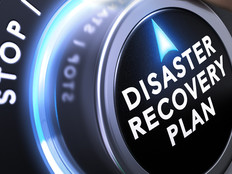Flood-Wary Small Businesses Find Better Backup in the Cloud
For small-business owners in flood-prone regions, protecting assets from rising water calls for more than boarding up windows and stacking sandbags — it requires establishing backup processes that enable business continuity in the face of a disaster.
“Business continuity is being able to restore operations in another location if the business goes down,” says Dave Lockhart, a senior consultant with TayganPoint Consulting Group.
But setting up a secondary data location isn’t an option for many small or medium-sized businesses, such as those in the recently flood-ravaged areas of Louisiana and Ellicott City, Md. That’s because, unlike larger enterprises, SMBs often lack the capital and human resources required to first build and then maintain redundant facilities.
Instead, small business owners can turn to cloud-based service offerings to ensure the integrity and availability of data and applications in the wake of a flood.
Lower Costs, Increased Dependability in the Cloud
By delivering failover to the cloud within a predetermined time frame, Disaster Recovery as a Service (DRaaS) provides the peace of mind small-business owners need.
“DRaaS can serve as a warm, active site available in the event of a disaster,” writes cloud expert Sandra Yu in a CDW Solutions blog post.
DRaaS solutions enable employees to access email, web servers and critical applications via the internet, from wherever they are. And service providers follow a pay-as-you-go model, meaning organizations are charged only for the resources they consume.
“Since there is no capital expense required and the annual test and failover is all the responsibility of the provider, it ultimately saves organizations capital, time and resources,” Yu writes.
Risks to Businesses Rise with the Tide
Despite the importance — and growing ease — of deploying DRaaS solutions, some small businesses owners don’t prioritize disaster recovery and business continuity planning. After all, considering the demands of the day, future worries seem far away. But is a disaster really so distant?
“Research has shown that due to climate warming increasing the intensity of rain events and sea-level rises, flood events of various severity will become more common,” says Mark Hoekzema, chief meteorologist and director of meteorological operations at Earth Networks. “This could mean more numerous minor floods as well as increasing the potential for a record flood event.”
The recent floods demonstrate just how devastating historic flooding can be, even in Louisiana, where floodwaters are always rising. Both of those disasters were caused by “1,000-year storms” — events that, statistically, have a .01 chance of occurring in any given year.
“Anywhere in the U.S. would have had major damage from storms of this size,” says Dr. Robert Traver, an engineering professor at Villanova University and director of the Villanova Urban Stormwater Partnership. “What we can do is minimize the risk and build in resilience.”
DRaaS presents a flexible, affordable solution that helps small businesses do just that.









